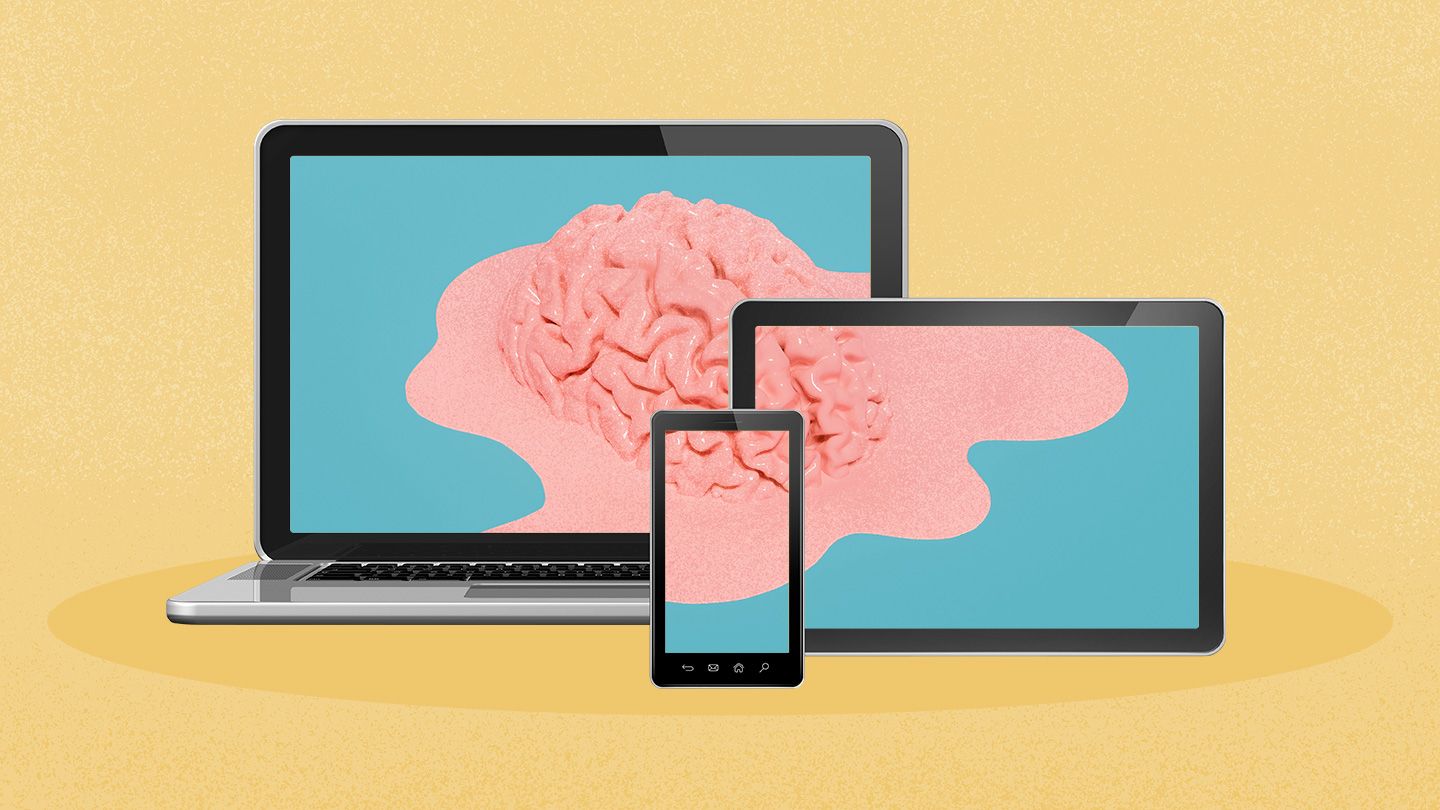We all have times when it feels impossible to look away from our screens, whether we’re swiping our way through dating apps or Pinterest boards or doomscrolling through our news feeds.
Oxford defines brain rot as “the supposed deterioration of a person’s mental or intellectual state, especially viewed as the result of overconsumption of material — now particularly online content — considered to be trivial or unchallenging,” Oxford University Press said in a statement announcing its word of the year.
Use of the term “brain rot” surged 230 percent between 2023 and 2024 amid mounting concerns about the toll excessive consumption of social media and online content takes on our mood and cognitive health, according to Oxford. It’s used to describe the mind-numbing content found on social media and the internet, as well as the subsequent negative impact this can have on our brain health.
“There’s an arms race to develop digital content and platforms that can grab people’s attention and compete in a digital market that is saturated,” says Adam Leventhal, PhD, a professor and executive director of the Institute for Addiction Science at the University of Southern California in Los Angeles.
“Digital content and platforms that win the arms race are increasingly addictive,” Dr. Leventhal adds. “They pull people into ‘digital binges’ or ‘doom scrolling,’ and expose consumers to unhealthy content.”
What Are Symptoms of Brain Rot?
Brain rot isn’t an official medical diagnosis, but the unhealthy amount of screen time it describes can definitely lead to a wide variety of cognitive and emotional problems, says Laurie Ann Manwell, PhD, a psychologist and instructor at Wilfrid Laurier University and the University of Guelph in Canada, who studies addiction and mental health.
“Excessive screen time can negatively affect attention, concentration, learning, memory, emotional regulation, and social functioning,” Dr. Manwell says.
Warning signs of brain rot in people of all ages can be similar to what happens in older adults who are developing cognitive impairment, Manwell says.
She lists the following symptoms of brain rot:
- Consistent impairments in concentration
- Being easily or frequently disoriented
- Difficulty with making and retaining new memories, especially of recent events
- Problems taking care of oneself physically
- Changes in personality and sociability
- Sustained changes in mood, reasoning, and decision-making abilities
How Does Brain Rot Happen?
Brain rot can occur because the time people spend on screens is time they’re not doing things that can promote brain health, such as exercise, sleep, socializing in real life, and doing activities that are mentally challenging, Manwell says.
Brain rot can also be caused by the way we use our screens, Manwell adds. Too often, we’re passively scrolling and consuming content at a rapid pace while multitasking or and trying to work or study at the same time.
“Using screens in these ways can result in divided and reduced attentional resources, leading to poorer learning and memory capabilities, which can increase stress and emotional dysregulation when one has to continually relearn things,” Manwell says. “There are often also corresponding effects on the brain such as reduced gray matter and white matter, leading to impaired processing capacity and efficiency.”
Who Is Most At Risk for Brain Rot?
One reason brain rot can be such a big problem for people is because it can impair what’s known as neuroplasticity, or how easily the brain adapts and makes new connections based on new experiences, Manwell says.
Throughout our lives, engaging in new activities and learning new things can increase neuroplasticity, which in turn protects us from cognitive decline as we age, Manwell says. The repetitive consumption of mindless content on our screens has the opposite effect, diminishing the brain’s ability to effectively manage cognitive and behavioral function.
Children and teens are most at risk because developing brain rot from excessive screen time at an early age while the brain is still developing can lead to a lifetime of poorer cognitive and behavioral health, Manwell says.
“Children, who are developing brain pathways and skills that support sustained attention, impulse control, and mood regulation, might be more vulnerable to these effects,” Leventhal says. “It’s possible that excessive digital media use interferes with that.”
What to Do About Brain Rot
Even though brain rot isn’t a real medical diagnosis, there are some things you can do to prevent it and try to reverse some of its impact, Leventhal says.
“Changing digital media habits can improve well-being,” Leventhal says. “Screen breaks, time limits, and restrictions for using certain unhealthy apps can be useful.”
There are lots of apps that can help you track total screen time, and enforce digital detox periods to help you unplug and engage with activities in real life, Manwell says.
This is more of a short-term fix, however, and you may need to take a hard look at your daily habits in order to improve your mood and cognitive function once brain rot sets in.
“For real change, one should consider lifestyle changes that are sustainable in the long-term, such as replacing screen time with other activities, such as meditation; exercise; reading; joining in-person social groups; learning new skills, such as a new language or musical instrument; playing with animals; engaging with nature — and doing these activities regularly,” Manwell says.
If screen time is a significant part of your job, you may need to get creative to find ways to step away from your computer and phone, such as printing materials you would normally read online or doing in-person instead of virtual meetings, Manwell advises. When you do need to be on a screen, you should do your best to make that your only focus, so you can efficiently complete the task at hand.
“Being mindful and actively engaged and focused on screens can also help offset the negative effects that occur when multitasking as well,” Manwell says.
Read the full article here




